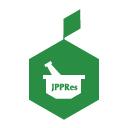Abstract
Context: Glycyrrhiza glabra (licorice) has been used since ages as expectorant, antitussive and demulcent. G. glabra has been indicated in Ayurveda as an antimicrobial agent for the treatment of respiratory infections and tuberculosis.
Aims: To evaluate the antimycobacterial activity of acetone extract of G. glabra by in vitro techniques.
Methods: The anti-tubercular activity of acetone extract of G. glabra, obtained by Soxhlet extraction, was evaluated against Mycobacterium tuberculosis H37Rv (ATCC 27294). The in vitro anti-tubercular activity was determined by Resazurin Microtiter Plate Assay (REMA) and colony count method. Further, the anti-tubercular activity of acetone extract of G. glabra was determined in human macrophage U937 cell lines and was compared against that of the standard drugs isoniazid, rifampicin and ethambutol.
Results: G. glabra extract showed significant activity against Mycobacterium tuberculosis, when evaluated by REMA/colony count methods and in U937 human macrophage cell lines infected with Mycobacterium tuberculosis H37Rv. The activity of the extract was comparable to those of standard drugs. It was observed that the extract showed time and concentration dependent antimycobacterial activity.
Conclusions: The present study reveals that G. glabra extract has promising anti-tubercular activity by preliminary in vitro techniques and in U937 macrophage cell line. Therefore, it has the definite potential to be developed as an affordable, cost-effective drug against tuberculosis.
